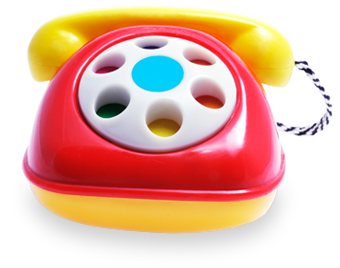The Latest Scoliosis Surgery Options
Growing rods are designed to decrease the severity of your child’s spinal curve, support their spine, and prevent the curve from worsening. Unlike spinal fusion surgery, which is not appropriate for younger children, they allow your child’s spine and chest cavity to continue growing.
The Shilla Procedure
A small portion of your child’s spine is straightened and fused, and metal rods are attached to either side of the spine above and below the curve. The rods, which help to correct the spinal curvature, are designed like a track-and-trolley system. This allows your child’s spine to grow more naturally. Although additional procedures to lengthen the rods are not required, a follow-up surgery may be needed to remove or replace the system once your child is finished growing.
MAGEC Growing Rods
MAGEC growing rods are titanium metal rods with an internal motor guided by magnets. During surgery, two rods are implanted -- one on either side of your child’s spine. In follow-up appointments, a remote control is placed on the outside of your child’s back. It communicates with the magnets inside the rods and painlessly extends them as needed. After your child has finished growing, the rods will be removed and replaced with solid rods during surgery.
Candidates for Scoliosis Growing Rods
Children with severe idiopathic scoliosis -- a side-to-side curve in the spine -- often need surgery to correct their spinal deformity. Your child may be a candidate for scoliosis growing rods if they are early in their growth cycle -- usually under age 10 -- and their spinal curve cannot be corrected with nonsurgical treatments. Our pediatric scoliosis experts perform a comprehensive evaluation to determine which procedure is right for your child.
Physical Exam and Medical History
Your child’s doctor will perform a physical exam and will ask about their health history. Girls may be asked questions about menstruation, as this information can help determine where they are in their growth cycle.
X-ray imaging shows joints and bones in your child’s back and helps your doctor measure the degree of their spine curve. X-rays of the hand can help determine where they are in their growth cycle. These tests take a few minutes and are painless and noninvasive.
Duke was the first center in the state to offer this specialized X-ray, which uses significantly less radiation than traditional X-rays. The entire body can be imaged at once, from both the front and side, and it can be done while your child is standing.
MRI or CT Scans
MRIs and CT scans create more detailed, 3D images of the spine, including the discs, nerves, and spinal cord. They take about 30 to 60 minutes and are virtually painless.
Growing Rod Surgery Recovery
Your child will remain in the hospital for two or three days to recover. Most children can return to school after two weeks.
Children who have the Shilla procedure can participate in sports and other activities after six weeks. Those with MAGEC growing rods may need to wear a brace for three months after surgery. When the brace is removed, they can return to their normal activities. In most cases, the rods are surgically removed, and permanent rods are placed when your child’s spine has stopped growing or their doctor determines that treatment is complete.
Follow-up Appointments for MAGEC Growing Rod Expansion
Your child will have follow-up appointments every three to four months. During these visits, their doctor will use an external electronic remote control to lengthen the rods. This non-invasive, painless process takes a less than a minute.
